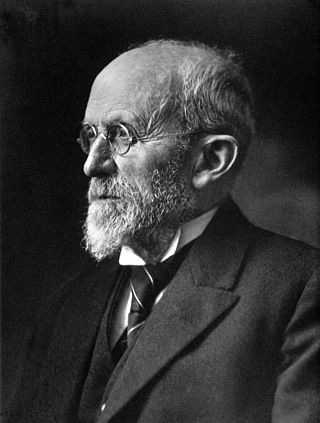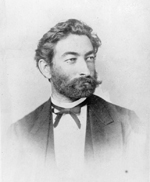
Erwin Friedrich Theodor Stresemann was a German naturalist and ornithologist. Stresemann was an ornithologist of extensive breadth who compiled one of the first and most comprehensive accounts of avian biology of its time as part of the Handbuch der Zoologie. In the process of his studies on birds, he also produced one of the most extensive historical accounts on the development of the science of ornithology. He influenced numerous ornithologists around him and oversaw the development of ornithology in Germany as editor of the Journal für Ornithologie. He also took an interest in poetry, philosophy and linguistics. He published a monograph on the Paulohi language based on studies made during his ornithological expedition to the Indonesian island.

Karl Hermann Johannes Thiele was a German zoologist specialized in malacology. Thiele was born in Goldap, East Prussia. His Handbuch der systematischen Weichtierkunde is a standard work. From 1904 until his retirement in 1925 he was the curator of the malacological collection at the Museum für Naturkunde in Berlin. Thiele described more than 1.500 new species of molluscs; until today their types are deposited with the Museum of Natural History in Berlin. Especially important are his works on the Mollusca of the First German Antarctica Expedition and of the German Deep Sea Expedition aboard the vessel Valdivia.

Carl Gegenbaur was a German anatomist and professor who demonstrated that the field of comparative anatomy offers important evidence supporting of the theory of evolution. As a professor of anatomy at the University of Jena (1855–1873) and at the University of Heidelberg (1873–1903), Carl Gegenbaur was a strong supporter of Charles Darwin's theory of organic evolution, having taught and worked, beginning in 1858, with Ernst Haeckel, eight years his junior.

Max Carl Anton Fürbringer was a German anatomist, known for his anatomical investigations of vertebrates and especially for his studies in ornithology on avian morphology and classification. He was responsible for the first major phylogenetic ordering of bird groups based on a large scale study on a combination of skeletal, morphological and anatomical characteristics.
Gerolf Steiner was a German zoologist.

Prof Karl (Carl) Theodor Ernst von Siebold FRS(For) HFRSE was a German physiologist and zoologist. He was responsible for the introduction of the taxa Arthropoda and Rhizopoda, and for defining the taxon Protozoa specifically for single-celled organisms.

Richard Wilhelm Karl Theodor Ritter von Hertwig, also Richard Hertwig or Richard von Hertwig, was a German zoologist and professor of 50 years, notable as the first to describe zygote formation as the fusing of spermatozoa inside the membrane of an egg cell during fertilization. Richard Hertwig was the younger brother of Oscar Hertwig, who also analyzed zygote formation.

Adolf Naef was a Swiss zoologist and palaeontologist who worked on cephalopods and systematics. Although he struggled with academic politics throughout his career and difficult conditions during World War I and II, his work had lasting influences on the fields of phylogenetics, morphology, and embryology.

Carl Eduard Adolph Gerstaecker was a German zoologist, entomologist and professor at the University of Berlin and then the University of Greifswald.

Julius Victor Carus was a German zoologist, comparative anatomist and entomologist.

Emil Selenka was a German zoologist. He is known for his research on invertebrates and apes and the scientific expeditions he organized to Southeast Asia and South America.

Ludwig Hermann Plate was a German zoologist and student of Ernst Haeckel. He wrote a "thorough and extensive defence" of Darwinism, but before Mendel's work had been assimilated in the modern synthesis.
Alexander Wilhelm Götte, best known as Alexander W. von Goette, was a German zoologist born in St. Petersburg. He is remembered for his studies involving the biological development of various animals. The invertebrate species Opisthocystis goettei is named after him.

Eduard Oscar Schmidt was a German zoologist and phycologist.

Hermann Joseph Fritz Römer was a German zoologist.

Arnold Lang was a Swiss naturalist, a comparative anatomist and student of German biologist Ernst Haeckel.
Maximilian Christian Gustav Carl Braun was a German anatomist and zoologist who specialized in the field of parasitology.
Hermann Stitz was a German biologist and entomologist. He was a specialist in Hymenoptera especially ants and Neuroptera. He worked mainly on the collections of the Berlin Museum für Naturkunde der Humboldt-Universität including insects collected on the German Central Africa Expedition 1910-11, and the German-Soviet Alay-Pamir Expedition of 1928
The German Zoological Society is a learned society in Germany, founded in 1890 at Frankfurt am Main. It is registered as a non-profit organisation based in Munich.

Ludwig Heinrich Reh was a German entomologist who worked on crop pests and was among the first professional entomologists involved in quarantine regulation in Hamburg port.















